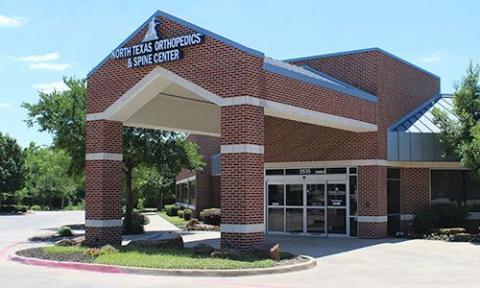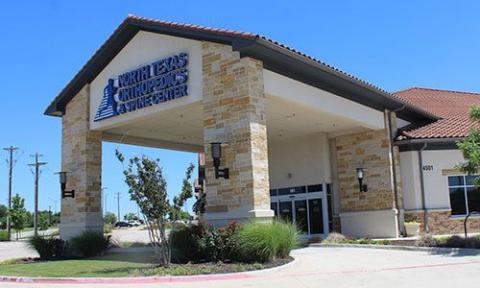Spinal health is essential for overall well-being, but certain conditions, such as oncologic spine issues, can severely affect both quality of life and the effectiveness of cancer treatment. Dr. Michael Briseño, an orthopedic surgeon specializing in spine care at North Texas Orthopedics, sheds light on the challenges and advancements in managing spinal tumors, focusing on providing patients with better pain relief, improved mobility, and a higher quality of life.
What Are Oncologic Spine Issues?
Unlike the more common spinal conditions caused by wear and tear or degenerative changes, oncologic spine issues arise when cancer impacts the spine. As Dr. Briseño explains, these issues occur when cancer either originates in or spreads to the spine. This can lead to significant problems, including fractures, spinal instability, and even spinal cord compression. Unlike normal spinal injuries, the healing process for spinal tumors is more complex because cancer weakens the bone, causing fractures that don’t heal in the same way.
Managing Pain from Pathologic Fractures
Pain control for spinal tumors is particularly challenging due to the nature of pathologic fractures. These fractures lead to severe discomfort because the bone is not as strong as it should be, which means the usual healing process is disrupted. Dr. Briseño emphasizes the importance of a multi-disciplinary approach in managing these fractures. This includes using traditional medications, soft tissue work, physical therapy, and, if necessary, stabilization through external means like bracing or surgery. Stabilization plays a crucial role in reducing pain and improving patient mobility.
Urgency in Treating Spinal Cord Compression
Spinal cord compression is a serious concern when dealing with spinal tumors, as it can cause permanent damage if not treated promptly. Dr. Briseño highlights the urgency of addressing spinal cord compression caused by tumors. The spinal cord, unlike bones and joints, is part of the neurologic system and is extremely sensitive to injury. Decompressing the spinal cord and stabilizing the spine are vital interventions that are treated as medical emergencies.
Advanced Techniques: Tumor Ablation with Medtronic
Dr. Briseño and his team have made significant strides in managing spinal tumors using advanced procedures like tumor ablation in collaboration with Medtronic. The OsteoCool procedure is an innovative approach to treating pathologic fractures caused by tumors. Traditionally, doctors would inject cement into the bone to stabilize it, but that alone would not stop tumor growth. The OsteoCool technique allows for simultaneous tumor ablation and bone stabilization.
Dr. Briseño describes the procedure: “We place a probe into the tumor itself; we ablate the tumor cells, which kills those cells locally in that one area, and then that allows for local control.” Following the ablation, the bone is stabilized with cement, providing both pain relief and structural support.
Enhancing Patient Care Through Collaboration
The collaboration with Medtronic has significantly improved patient care by streamlining the treatment process. Instead of requiring patients to visit multiple specialists for radiation and surgical procedures, this advanced technique allows orthopedic surgeons like Dr. Briseño to manage both tumor ablation and bone stabilization in one procedure. This reduces the burden on patients and enhances their overall care experience.
Comparing Traditional and Advanced Treatment Methods
Traditional methods for managing oncologic spine issues focused on stabilization through spinal fusion, bracing, and pain management with medications, including narcotics. While these methods are still in use, they have limitations. Advanced procedures like tumor ablation offer additional options, allowing doctors to minimize the systemic side effects of surgery and medications.
Improving Quality of Life
“These procedures are designed to improve quality of life in patients who are undergoing a significant battle with their oncologic disease,” says Dr. Briseño. He recalls a patient who couldn’t lie still for cancer radiation treatments due to severe pain. After undergoing the OsteoCool procedure, the patient was able to complete the necessary radiation therapy, demonstrating the critical role of pain management in overall cancer treatment.
When a patient is overwhelmed by the severity of their diagnosis, Dr. Briseño focuses on treating the most symptomatic issue at the time. “If we can really narrow down to treating them with what is the most symptomatic at that time, then we can take it case by case and really visit by visit with that patient on how to treat them.”
Looking Ahead: The Future of Oncologic Spine Treatment
The field of oncologic spine surgery is rapidly advancing, with a strong focus on minimally invasive techniques. Dr. Briseño explains, “it’s about minimizing soft tissue disruption as we’re trying to treat form, function and pain. The OsteoCool is an example of that.” He also highlights the potential of robotic and navigated surgeries, which allow for more precise tumor resections and less soft tissue disruption. The goal is to provide patients with the necessary care while minimizing recovery time and side effects. The use of technology, such as robotic guidance, ensures that surgeons can remove tumors effectively and reduce the risk of leaving cancerous tissue behind. As these techniques evolve, patients with complex spinal tumors will benefit from safer, more efficient surgeries.
Conclusion
Oncologic spine issues present unique challenges, but advancements in medical technology and multidisciplinary care approaches are helping patients manage pain, improve mobility, and maintain a better quality of life. Dr. Michael Briseño and the team at North Texas Orthopedics are committed to providing cutting-edge care for patients with spinal tumors, using techniques like tumor ablation to improve outcomes and ease the burden of cancer treatment.
For more information or to schedule a consultation, please contact North Texas Orthopedics today.


